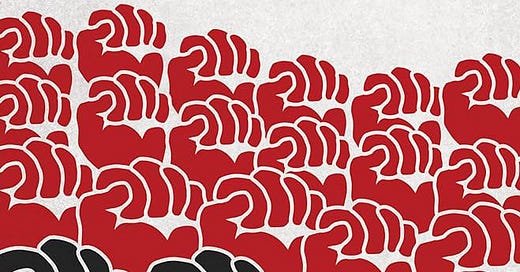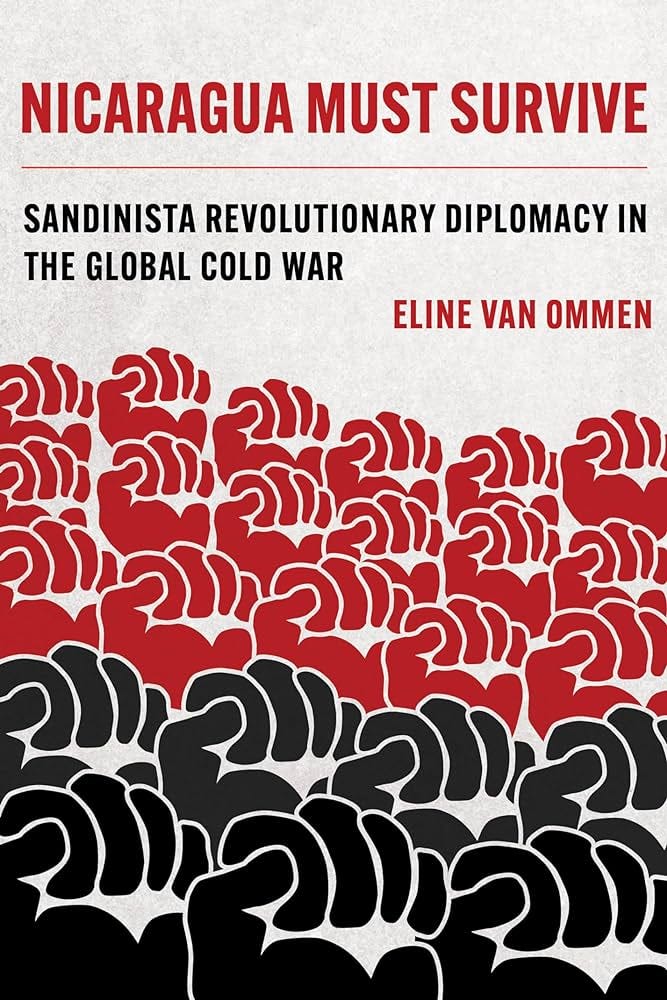Surviving the onslaught
How did a tiny Central American country besieged by the US get the better of the empire? Review: Nicaragua Must Survive, Eline van Ommen, by Gavin O'Toole
Nicaragua Must Survive: Sandinista Revolutionary Diplomacy in the Global Cold War, Eline van Ommen, 2024, University of California Press
In a striking precursor to contemporary events, in 1984 Nicaragua launched a case at the International Court of Justice (ICJ) accusing the US of aggression—and, against all odds, the tiny Central American country won.
In 1986, judges in The Hague ruled that Ronald Reagan’s administration had broken international law and violated Nicaraguan sovereignty by waging a counter-revolutionary (Contra) war against the country and mining ports.
They ordered Washington to refrain immediately from all illegal acts and—rubbing salt in the wound—told it to pay Nicaragua reparations estimated at $17bn.
In its imperial arrogance, of course, the US ignored the court and continued supporting the Contras, yet the case remains an astonishing example of how a small state can defend itself against a giant.
Moreover, through this case Nicaragua engineered strains in European relationships with Washington that could serve its chief diplomatic objective—to survive the US onslaught—fuelling doubts, for example, in Britain about Reagan’s reckless behaviour.
The lesson here is that, if it feels depressingly hard today to see the point of demonstrating solidarity with societies oppressed by forces so mighty as to make one despair their fate can ever improve, just think about plucky Nicaragua.
It took on the empire from 1979 to 1990, enduring the full proxied force of US wrath and suffering harsh consequences—yet for a lengthy period was undefeated, secured notable triumphs, and enjoyed global support.
By the time the Washington-backed opposition ended the Sandinista Revolution, Nicaragua had changed out of all recognition and had, in turn, overturned fatalistic attitudes about the inevitability of US hegemony throughout Cold War Latin America.
Of the many lessons that can be applied today from the extraordinary history of the Sandinista Revolution, therefore, the most pertinent relates to how a small country in the maw of imperialism wrested control of the global narrative.
Nicaragua’s ragtag and eclectic revolutionaries achieved something unprecedented for the best part of a decade, creating such a groundswell of support for their cause that it protected them against what at the time seemed an imminent US invasion.
They did so by using every diplomatic and cultural device at their disposal—rhetorical sticks and stones to harry the world’s mightiest state—nurturing a novel form of solidarity that would prove critical to their survival in the most remarkable story of soft power in history.
Floods have flowed under the bridge since the late 1970s when the Sandinistas began their revolutionary diplomacy—and little of what has happened since 1990 is as instructive as their efforts before and during their rule to steer an agenda which would ensure, above all else, that “Nicaragua Debe Sobrevivir” (“Nicaragua must survive”).
Eline van Ommen’s history of this exercise provides a unique insight both into the efforts of the Nicaraguan foreign service to build support for the revolution, but also the critical role of the solidarity movements they interacted with in unexpected places.
For while the empire plotted in Washington amid the powerplay under Reagan of a new phase in the Cold War, it was arguably only through skilful and innovative networking elsewhere that Nicaragua spared itself the US sword.
As the author shows, quoting one Nicaraguan diplomat, that despite the enormous human costs of its civil war, the “real battle” over the country in the late 1970s and 1980s took place “in public opinion and in Congress, and with the Europeans”.
She asks important questions that can offer succour to other struggles against imperialism today: why did the revolution have such a global impact, and why did transnational actors and foreign policies have such consequences for its fate on the ground?
As Van Ommen says, this was not inevitable, automatic, or even logical, considering Nicaragua’s scant resources, small size, and misfortune being located in America’s “backyard”.
The answer to both these questions, she argues, is found in Sandinista diplomacy, which “blended grassroots organising with traditional foreign policy” by recognising that public perceptions and non-state actors were crucially important resources.
The Sandinistas, therefore, combined state-level diplomacy focused on managing relations in a traditional way with a novel mixture of culture, propaganda, and personal relationships resulting in the formation of a muscular transnational solidarity network.
Van Ommen’s book can be considered part of a wider reassessment of the role played by Central America in the Cold War as well as an emerging perspective that gives far greater agency to the Global South in this period. It is one of two books published this year offering new insights into the Sandinistas’ global diplomacy (see Mateo Jarquín’s The Sandinista Revolution).
The Nicaraguan revolution ensured that Central America became the main focus of Latin America’s Cold War struggles, re-invigorated the armed left—and further radicalised the anti-communist right, with brutal consequences.
Even before their victory against Somoza in 1979, however, the FSLN was aware of the need for mobilising international support, with Reagan’s election in 1980 turning this into a question of survival—CIA sabotage, the Contra incursion, US economic warfare and efforts to isolate Nicaragua globally combined in an existential struggle.
There are historical lacunae about this period’s international dimensions, not least the Iran-Contra scandal which demonstrated the illegal lengths to which the White House went to avoid scrutiny of its murderous assault.
It is relevant to note, for example, the role played by Israel as a third-party supplier of arms to the counter-revolutionaries in a triangular relationship with the US and Contras.
This is important because it speaks to the role Israel continues to play today doing US dirty work by equipping the enemies of democracy in Latin America—and hence the importance of international solidarity in countering it.
Not only did Israeli intelligence officers assist former members of Somoza’s National Guard to create the Contras in Honduras, several hundred tons of weapons later given by the US to the counter-revolutionaries had been captured by Israel from the PLO in Lebanon in 1982.
Van Ommen writes that in such a climate, Sandinista diplomats went on the offensive—and the most important theatre of operations was not the Americas, but Europe.
The aim was to encourage Europe to assert itself in Central America, counter the Monroe Doctrine, and shift the balance of power in the sub-region in Managua’s favour.
The author writes: “The Sandinistas’ policy toward Western Europe was specifically designed to weaken the resolve and limit the possibilities of the United States and its allies for defeating the Nicaraguan Revolution … Western European involvement, even if not directly supportive of the revolutionaries, would undermine the United States’ regional hegemony.”
The FSLN was pushing at an open door amid growing frustration at Reagan’s anti-communist swashbuckling. Governments believed the European Community working alongside Latin American states could prevent US escalation in Central America turning the Cold War hot.
The eventual outcome was one of the most surprising consequences of the Central American civil wars, says Van Ommen—the revival of Western Europe as a global power acting independently of the US on the world stage.
At the same time, European collaboration with Latin American states empowered the latter’s own regional initiatives—the Contadora and Esquipulas processes—a groundbreaking rejection of US hegemonic claims.



